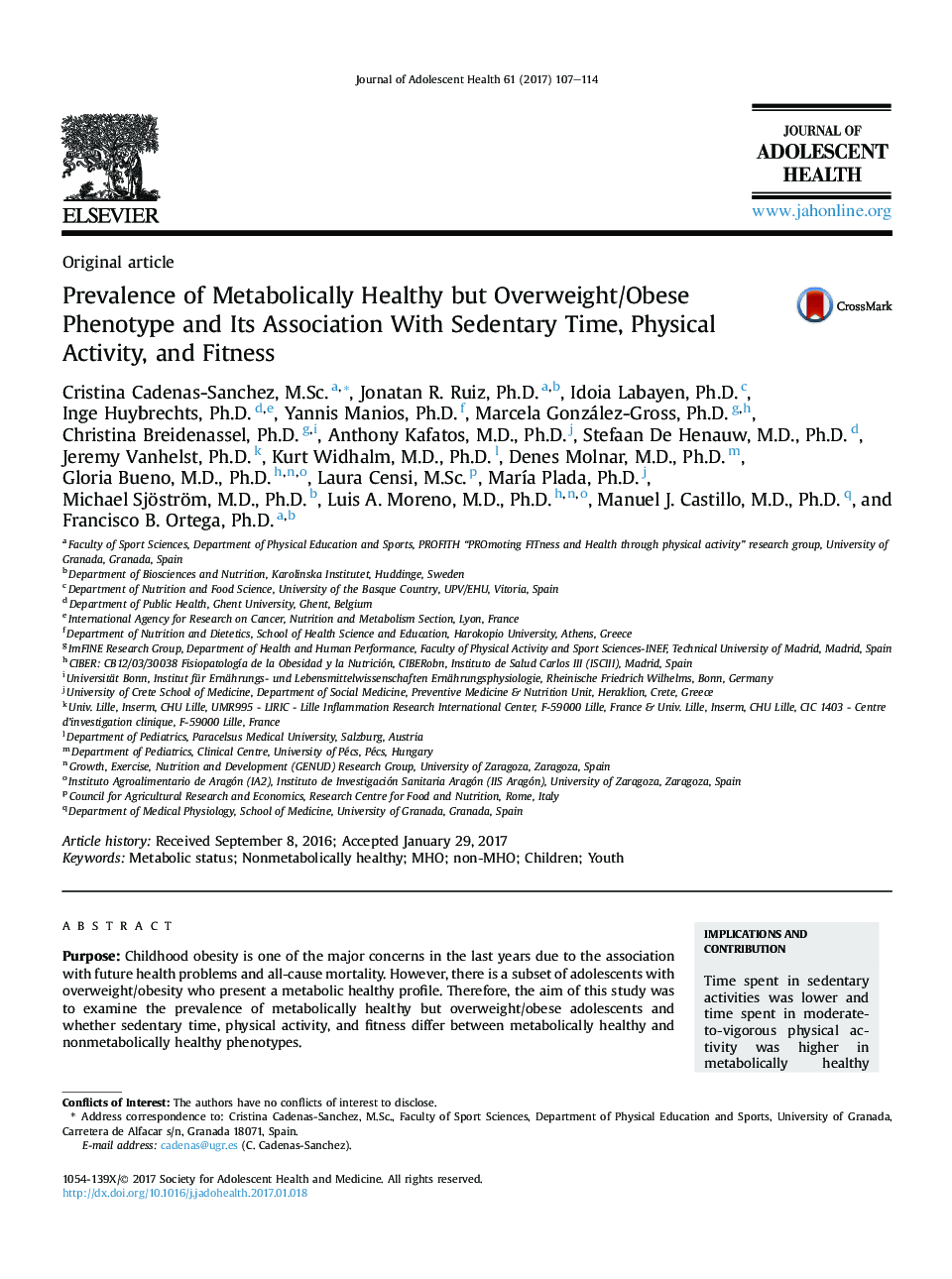| کد مقاله | کد نشریه | سال انتشار | مقاله انگلیسی | نسخه تمام متن |
|---|---|---|---|---|
| 5121189 | 1378289 | 2017 | 8 صفحه PDF | دانلود رایگان |
PurposeChildhood obesity is one of the major concerns in the last years due to the association with future health problems and all-cause mortality. However, there is a subset of adolescents with overweight/obesity who present a metabolic healthy profile. Therefore, the aim of this study was to examine the prevalence of metabolically healthy but overweight/obese adolescents and whether sedentary time, physical activity, and fitness differ between metabolically healthy and nonmetabolically healthy phenotypes.MethodsA subsample of 237 European adolescents from the HEalthy Lifestyle in Europe by Nutrition in Adolescence study (n = 3,528, participation rate: 61.3%) with overweight/obesity were included. The study sample was not fully representative for the European adolescent population. Based on sex- and age-specific metabolic syndrome cutoff points for triglycerides, glucose, blood pressure, and high-density cholesterol participants were classified as metabolically healthy or nonmetabolically healthy. Sedentary time, physical activity, and fitness were assessed by accelerometry and the Alpha battery, respectively.ResultsThe prevalence of metabolically healthy status in adolescents with overweight and obesity was higher in girls (87%) than in boys (74%, p = .019), being similar when only obesity was considered. Sedentary time was lower in metabolically healthy overweight/obese than in nonmetabolically healthy participants (mean difference = 48.0 minutes, p = .012). Moderate and moderate-to-vigorous physical activity were higher (p's < .05) in metabolically healthy than in nonmetabolically healthy adolescents with overweight/obesity (mean difference = 7.9 min/day and 10.9 min/day, respectively). No significant differences were found in fitness. Overall, these results persisted when only adolescents with obesity were included in the analyses.ConclusionsMetabolically healthy adolescents with overweight/obesity are less sedentary and more active than their nonmetabolically healthy peers with overweight/obesity, yet consistent differences in fitness were not observed.
Journal: Journal of Adolescent Health - Volume 61, Issue 1, July 2017, Pages 107-114
